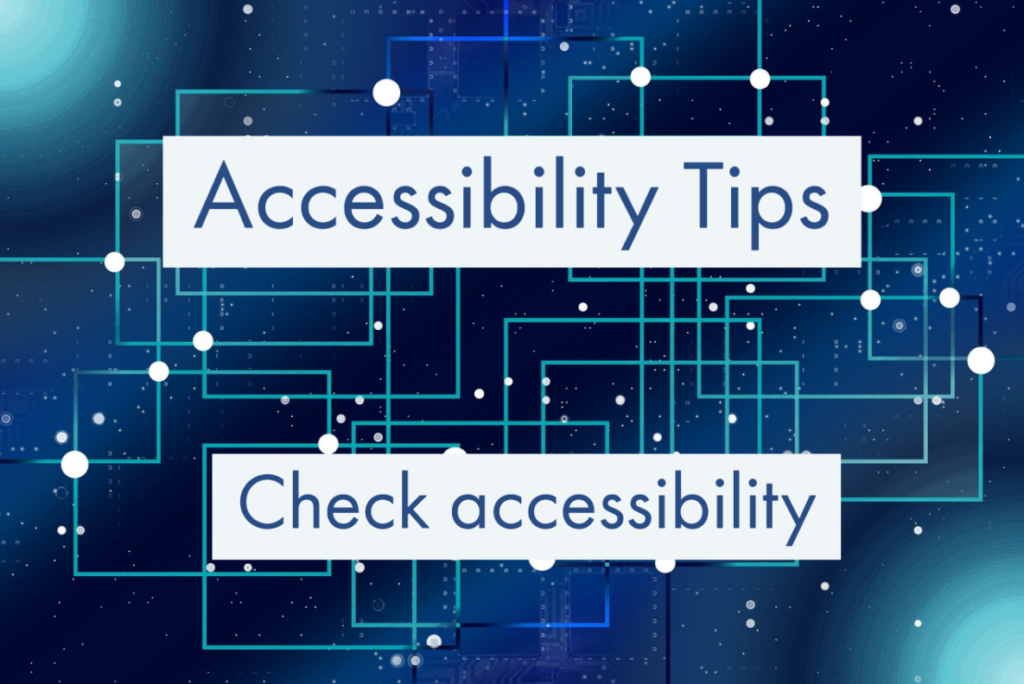
In the latest of our ‘Accessibility Tips’ blog posts I will be looking at some quick and easy ways that you can check that the digital materials you produce meet the legislation requirements and provide an improved learning environment for all. You can read more about digital accessibility in the Digital Accessibility toolkit.
Use the Accessibility Checklist
Many tools have built-in accessibility checkers, but these will work best if you have already used accessible design features in your documents. This Accessibility Checklist (which you could even print out and pin up near your desk) will help you create materials that are accessible. Our blog post on inclusive design also has some great tips on this.
Think of any accessibility checkers in the tools you use as like spell-checkers; you still try to spell everything correctly as you write, but they are great to use at the end of the process. Like spell-checkers, accessibility checking tools will not necessarily identify every issue.
Check content in Canvas
When you are creating content in Canvas you can use the integrated accessibility checker which is available wherever the Rich Content Editor (RCE) is used. That includes Announcements, Assignments and Discussions as well as Pages. The tool checks tables, headings, alt-text for images and text contrast and offers suggestions to fix issues.
To learn more about the Canvas Accessibility Checker see:
- Canvas Know-How: Using the Accessibility Checker on our blog.
- How do I use the Accessibility Checker in the Rich Content Editor as an instructor? by Canvas
Check Microsoft Office documents
If you are using Word documents or PowerPoint presentations there is a Microsoft Accessibility Checker that makes it possible for you to check the accessibility of your documents directly from within the programme by selecting File > Check for issues > Check accessibility. This is useful for pre-existing documents, but if you are creating new documents, following guidance to make them accessible as you create them will help you to minimise the work involved in checking and fixing issues.
To learn more about making Word documents and PowerPoint presentations accessible see:
- Make your Word documents accessible by Microsoft.
- 5 Top Tips for creating inclusive presentations on our blog.
Check PDFs
PDF (Portable Document Format) has been used extensively for displaying documents online because they can be viewed and look the same across a range of devices. However, now that more material is being viewed on mobile devices and we are thinking more about accessibility, PDFs are posing challenges.
Staff at the University of Sussex have access to Adobe Acrobat Pro DC which allows you to check the accessibility of existing PDFs:
- Select Tools > Accessibility to open the Accessibility Checker.
- Run Full Check
- Select Start Checking
When creating new documents, however, it would be worth considering whether PDF is the best format to use and if you decide to use PDF take care to make it as accessible as possible.
You can learn more about this in:
- Create and verify PDF accessibility from Adobe.
- Problem Document Format: PDFs and Accessibility on our blog.
More help and guidance
The TEL team are always happy to advise and support staff in making teaching materials more accessible, so please contact us at tel@sussex.ac.uk if you want to discuss what is best for you and your students.



[…] Read the full story by University of Sussex Technology Enhanced Learning Blog […]